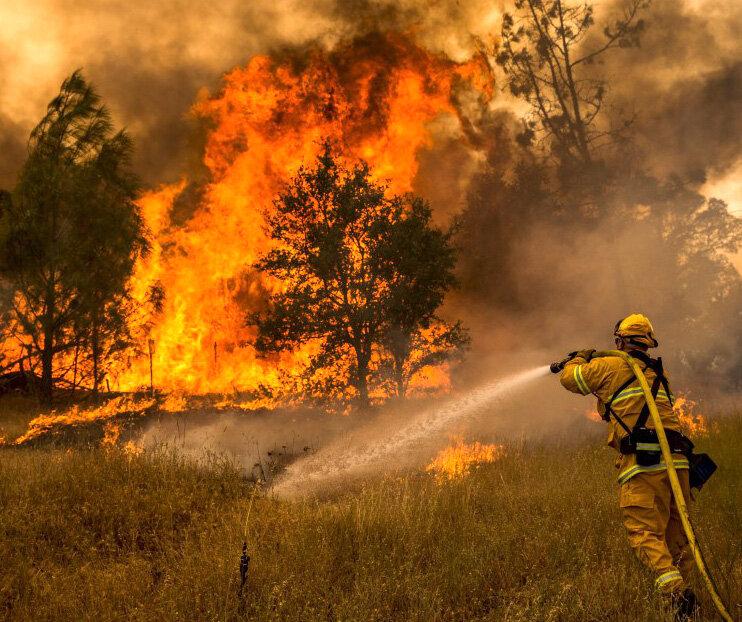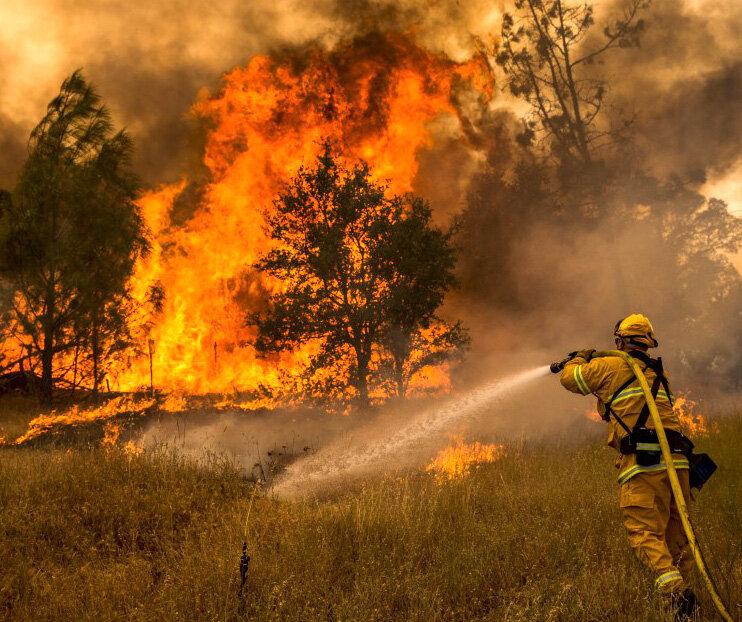Sonoma State University is opening its doors to wildfire evacuees, as the second and third largest wildfires in California history are burning simultaneously. Strong winds, low humidity, and high heat are currently fueling approximately 600 fires across the Golden State.
In a letter to the campus community, SSU’s Vice President of Administration and Finance, Joyce Lopes, announced that portions of campus will be transformed into a wildfire evacuee shelter, as requested by the California Office of Emergency Services.
“The shelter will be in our Residential Community of Cabernet and will be managed by the Red Cross in coordination with Sonoma County Emergency Management,” according to Lopes’ announcement. “The safety of the SSU community is of the utmost importance…shelter residents will be required to abide by all CDC, state, county, and campus guidelines to ensure safety during the pandemic.”
Sonoma State’s Interim Public Information Officer, Dr. Robert Eyler, said the university is providing up to “244 beds in 44 units,” and “the County of Sonoma is having evacuees come to campus starting August 22.”
According to Dr. Eyler, the arrangement is open-ended due to dynamic conditions, and SSU will be reimbursed for all costs incurred.
State officials are looking to provide relief to communities and evacuees, as three lightning complex fires consisting of multiple blazes threaten the security of the Bay Area.
Governor Gavin Newsom announced at the daily Cal Fire briefing, on August 21, that “the challenge we’re facing as a state is now disproportionately affecting Northern California,” after the region experienced “close to 12,000 lightning strikes over a 72 hour period.”
The LNU complex represents a series of fires impacting Lake, Napa, Solano, and Sonoma counties and is currently the second largest wildfire in California history.
Hennessey, centered around Lake Berryessa; Meyer, located north of Jenner; and Walbridge, west of Healdsburg, are the largest conflagrations.
More than 314,000 acres have burned since the blaze began on August 18, and Cal Fire reports the fire is less than 15% contained as of Friday, August 21.
Four fatalities and four additional injuries are attributed to the complex. 560 structures were destroyed, with 125 more damaged as a result of the fires.
The Cal Fire incident update for the LNU complex fire reports that “significant fire growth is expected throughout the rest of the operational period. Extreme fire behavior with short and long range spotting are continuing to challenge firefighting efforts. Fires continue to make runs in multiple directions…impacting multiple communities. Multiple fires have merged on the north side of Lake Berryessa into the Hennessey Fire.”
Mandatory evacuation orders are in effect for Sonoma County residents living near Healdsburg. The Walbridge fire grew to more than 50,000 acres and was still zero percent contained, as of Saturday, August 22 at 2:30 p.m.
High winds are fanning flames and threatening homes and businesses near Healdsburg and Windsor, as crews fight to slow the spread around Lake Sonoma.
Adding to the firefighting dilemma are the CZU complex fires in San Mateo and Santa Cruz counties and the massive SCU complex in Alameda, Contra Costa, Santa Clara, San Joaquin, and Stanislaus counties.
The CZU fires have consumed 63,000 acres, destroying 97 buildings and injuring two, and are only five percent contained, as of August 22.
The SCU complex surpassed 300,000 acres burned, putting it in third place in California fire history, but property damage is relatively minimal, with five structures destroyed and 10% containment reported.
The Bay Area is now bracing for a red flag warning period that is forecast to include a second round of thunderstorms and dry lightning, as extreme weather patterns continue.
Road closures, evacuation orders, and warnings are widespread and fluid. Stay safe, and visit fire.ca.gov for current guidance.





![[Both photos courtesy of sonoma.edu]
Ming-Ting Mike Lee stepped in as the new SSU president following Sakakis resignation in July 2022](https://sonomastatestar.com/wp-content/uploads/2024/04/CC4520AB-22A7-41B2-9F6F-2A2D5F76A28C-1200x1200.jpeg)



























